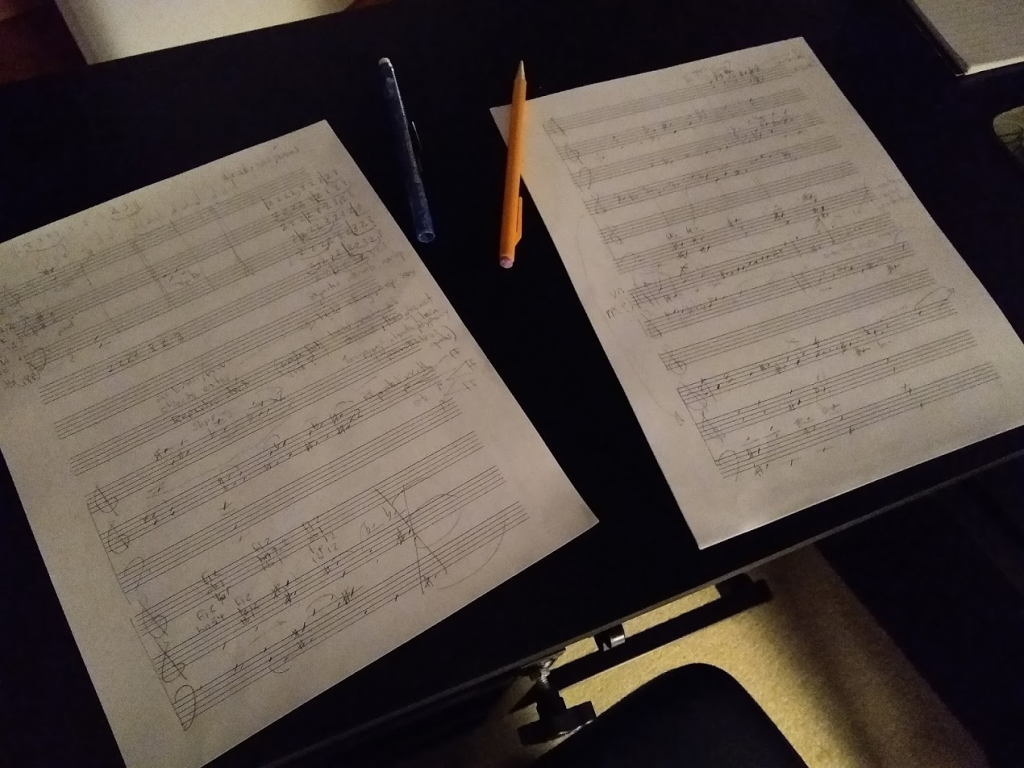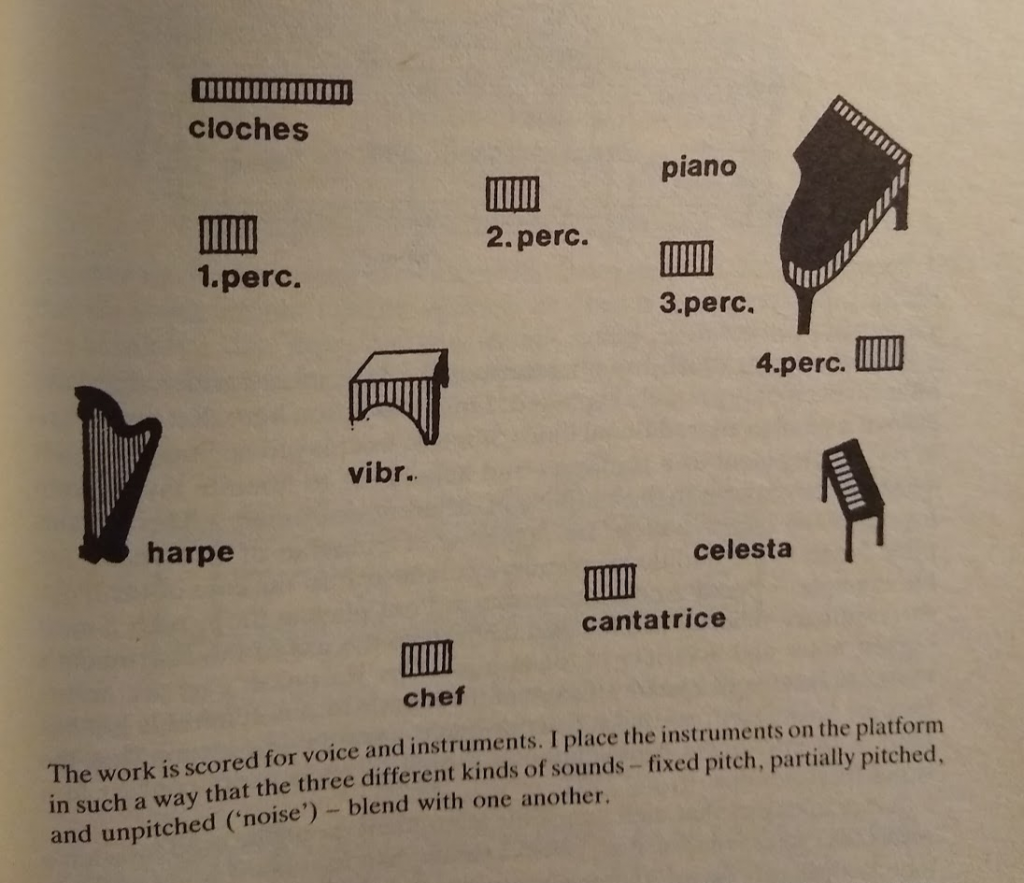I’m worried I have strayed from the tonality of last year’s studies (which is what I’ve wanted to do) but have made it all process and not art (which is what I didn’t). The 2nd movement was very deep into process much like what I’d read of Ferneyhough’s technique in Lemma (or any serialists really) and I’ve continued a bit with that approach with the 4th. Is it too much? I am very happy with the mood so far though.

I was also concerned, pre-election, that the post-world would put me in a different enough mood that… composing would be difficult? More difficult. Or that I wouldn’t see what I saw when I envisioned the work originally. However, two days after the election I sketched out the structure of the entire 4th movement and felt as confident as I did when I sketched out the interlude. I can’t say if a different outcome in the world would have allowed me the same state of mind, and I still don’t want to think about it.
More from Boulez: In chapters 20 and 21 he discusses Berlioz with much praise. I’ve never really listened or had much interest in listening to Berlioz, and in fact except for Messiaen I can’t say that I really like any French composers. However, one aspect that I’ve often read about is their history (if they can be a monolith) of emphasizing unique instrument combinations, but since I don’t remember where I’d read it, this may only be an apocryphal fact from my education. Thinking of Messiaen’s orchestral output that’s certainly true, and Debussy and Boulez could be included… or I could just be focusing on what I think to be unique. Boulez describes his Polyphonie X, Pli selon pli, and Improvisations sur Mellarme in the book with characteristic emphasis on instruments and placement, and Berlioz wrote of the importance of instrument placement and spatially arranging the sections of the orchestra based on the specific work they were performing (e.g. placement for a Beethoven symphony would differ from that of a Debussy work).

So w/r/t my disinterest in most French music–again, not a monolith but…–I’ve felt an affinity for tone-color combinations in the Symphony: instrumental timbres that I’ve either internalized or experiments that I mold sculpturally with greater or lesser success. And that’s one point that Boulez brings up about Berlioz that resonated with me: Berlioz had wanted to create music for an orchestra using nearly 1,000 musicians (467 instrumentalists and 360 choral singers). He spoke of the unique potential of hundreds playing in unison or the potential, unimagined combinations:
Besides the iridescent colours that this multitude of different timbres would allow to burst fort at any moment, unheard of harmonic effects could be created.
I would never want such an absurdity of excess, but the evocation of untapped color is intriguing.